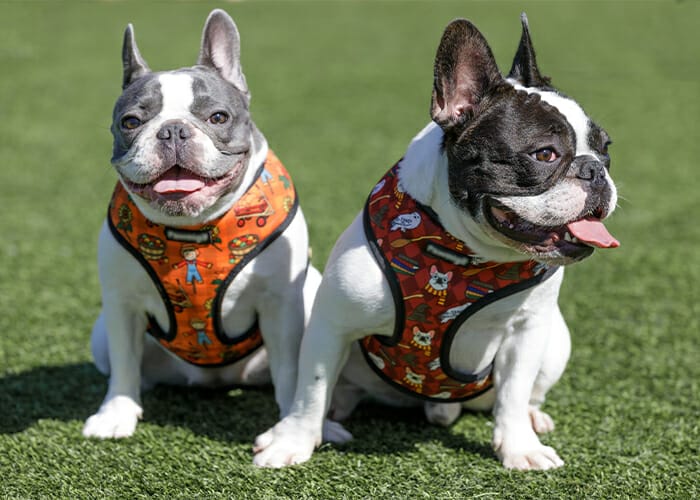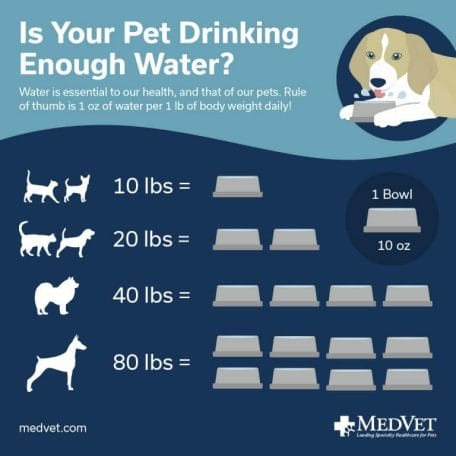
Those long, hot, lazy days of summer can be quite enjoyable. But rising temperatures can mean rising concerns for your pet’s health. Overheating can lead to serious health consequences for your pet. Understanding the signs of heat exhaustion and heatstroke and knowing how to keep your pet cool can help you keep a trip to the ER off your summer to-do list.
How Pets Stay Cool
If you want to make sure your pets don’t overheat, it’s most important to understand what they do to stay cool. Our pets don’t sweat like we do to cool down. Although they do have some sweat glands in the pads of their feet, those aren’t enough to regulate their temperature. And thanks to their permanent fur coats, they can’t just remove layers of clothing like humans do.
Instead, dogs pant. The rapid breathing cools their internal organs and helps regulate their body temperature. For cats, they also lick their fur, and when the saliva evaporates it creates a cooling effect on their skin.
The Dangers
Heat exhaustion and heatstroke are typically seen in dogs and rarely in cats. Dogs are usually out and about more in the heat, playing outside, going for walks and runs with their owners, or riding in the car. For cats, it’s more likely to be because they were trapped somewhere like a clothes dryer or in an “oven like” structure with poor ventilation, like a shed that heats up on sunny, summer days.
Heat Exhaustion
Heat exhaustion occurs when your pet’s body temperature rises above their normal temperature. Although heat exhaustion is serious, it is typically less dangerous than heatstroke. Your pet may experience signs of heat exhaustion first before moving into heatstroke.
Signs of heat exhaustion in pets include:
- Excessive panting
- Extreme lethargy
- Weakness, staggering, or inability to walk
- Increased salivation or thick, sticky saliva
- Collapse
- Dark red or pale gums
- Vomiting and Diarrhea
- Increased heart rate
Heatstroke
Heatstroke occurs when your pet’s body temperature rises to dangerous levels. It’s a life-threatening condition that can cause organs to shut down and may lead to irreversible damage. Signs of heatstroke are similar to heat exhaustion but more severe and may include additional signs of seizures, collapse, and unconsciousness.
What to Do if Your Pet is Overheating
- Stop any activity and move somewhere cool. Preferably in the air conditioning, but at a minimum, to a shady spot. If you can get your pet in front of a fan, that can also help.
- Offer a small amount of cool water. However, don’t force them to drink it.
- Use wet towels or a cool water hose to soak your pet. Placing small ice packs under the armpits and neck area for intermittent periods of 3-5 minutes can be helpful.
- Get to your vet! Call your veterinarian right away. If you have a rectal thermometer and can take your pet’s temperature, that can be important information to share. Even if it seems your pet is cooling down, there could be internal damage to organs that you can’t see.

Hydrating to Beat the Heat
One of the most important things you can do to help protect your pet from the heat is to make sure they are getting enough water. Your pet should be drinking one ounce of water for every pound of body weight.
If you notice your pet is experiencing loss of appetite, reduced energy levels, panting, sunken or dry-looking eyes, loss of skin elasticity, or has dry nose and gums, they may already be dehydrated. It’s all about balance though. If your pet drinks too much, they can experience water intoxication which can also be dangerous. Signs of water intoxication include loss of coordination, lethargy, bloating, vomiting, glazed eyes, excessive salivation, difficulty breathing, seizures, and coma.
Having cool, clean water available to your pet throughout the day is important. However, you might not want to use the types of bowls that constantly refill as that is more difficult for you to monitor their water intake. Especially is you have a pet who likes to over-consume.

Other Safety Precautions to Protect Your Pet
Besides making sure your pet is appropriately hydrated. There are other things you can do to help protect your pet in rising temperatures.
- Avoid intense activities such as jogging or running when the air temperature is great than 75 degrees. Limit time spent outside and walks or other exercise to the cooler parts of the day.
- Don’t leave your pet in the car. The inside of a car can heat up to 100 degrees in less than 10 minutes on an 80-degree day.
- Ensure that your pet always has access to a cool area or shade if they are outside. Indoors if you don’t have air conditioning, you can try drawing curtains shut and offering a fan to help keep a room cooler.
- Protect their paws from hot pavement. If the air temperature is 87 degrees, the asphalt could be as high as 143 degrees. Place the back of your hand on the pavement for seven seconds. If it’s too hot for your hand, it’s too hot for your pet’s paws. Instead walk them on grass or in the cooler parts of the day.
- Water works wonders. In addition to clean drinking water, a sprinkler or baby pool filled with water can help your pet cool down.
